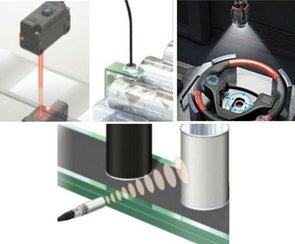 A guide to sensors and detection principles
A guide to sensors and detection principles
October 25, 2016 REDWIRE is news you can use from leading suppliers. Powered by FRASERS.
Posted by Keyence Canada
KEYENCE is a global leader in the development and manufacturing of sensing equipment including automation sensors, measu... Read more
Subscribe
Free REDWIRE e-newsletter

Sensors have the capability to greatly improve a company’s productivity if used correctly for the right applications. But with such a large pool of sensors to choose from, it can be difficult to know which one will meet the needs of the application. The first step is to gain an understanding of the different types of sensors available, as well as the various detection principles, to learn which will add value to the specific application.
Detection based on light
Photoelectric sensors, fibre optic sensors and laser sensors all detect based on light. Photoelectric sensors emit a light beam from a light-emitting element. They are great for applications that will benefit from non-contact detection of all types of materials over long distances. Fibre optic sensors, on the other hand, feature an optical fibre connected to a light source. This compact sensor enables the detection of small targets in tight spaces. Meanwhile, laser sensors emit light in a straight line. These sensors make alignment and positioning very easy, which decreases installation time. They are also highly accurate, and have long detecting distances.
Detection based on eddy current
Inductive proximity sensors and inductive displacement sensors detect based on eddy current. Inductive proximity sensors can detect metal targets without physical contact, while inductive displacement sensors not only detect the presence of a target, but also measure the distance to a target.
Detection based on contact
A contact positioning sensor measures the position of a target by directly contacting it. They are typically used to detect the height, thickness or warpage of a target.
Detection based on ultrasonic
Ultrasonic/level sensors measure distance by using ultrasonic waves. They measure the distance to the target by measuring the time between the emission and reception. They can detect transparent targets, dirty targets and those with a complex shape.
Detection based on images
Vision sensors use images captured by a camera to determine presence, orientation and accuracy of parts. They have the capability to detect multiple points with a single sensor.
Where to go for more information
Keyence carries a wide selection of sensors, and can help companies determine which is the best for their application. Its website features an introductory guide to sensors, outlining the basics of sensors based on multiple detection principles.
To learn more, contact Keyence Canada.
Share
Posted by Keyence Canada
KEYENCE is a global leader in the development and manufacturing of sensing equipment including automation sensors, measu... Read more